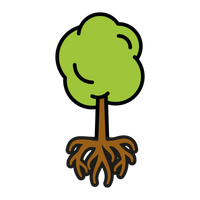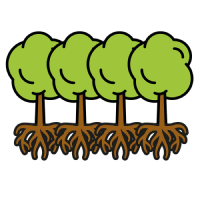When should I plant Japanese Spindle hedging?
We recommend planting Japanese Spindle plants during autumn, when the weather is a little cooler and damper.
How far apart do you plant Japanese Spindle plants?
Similarly, to other Euonymus varieties, Japanese Spindle should be planted around 25-35cm apart, to encourage a lush, bushy hedge.
How to plant Japanese Spindle:
Begin by removing any weeds or rocks etc., from your planting area. Then go on to digging a hole that is about twice as wide as the root ball, but the same depth. Break the soil up a bit using your spade, around the sides and bottom, to prevent soil compaction. Replace around 2 inches of soil.
Take your Japanese Spindle plant out from its pot, removing any dead roots you can see, and loosen the root ball up a little - this will encourage them to spread out and establish further.
Place the plant into the hole and make sure the base (bottom of stem) is around 2 inches above ground level. Backfill the hole with the excess soil and press down gently but firmly to secure the plant.
Finish off by giving the plant a very good watering around the base. You will need to water on a regular, weekly basis, and more so during dry spells/summer. Watering enough is very important as it encourages the roots to grow and develop, therefore influencing the shrub's establishment.











